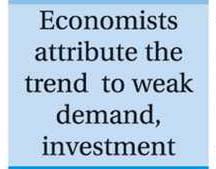The country's current-account posted a record surplus in July-August period of the current fiscal year, amid the pandemic.
The current account balance, a measure of the nation's trade and financial flows with other countries, rose to US$ 3.3 billion at the end of August, 2020, Bangladesh Bank statistics said.
During the period, export was recorded at $6.7 billion while import payment was $7.4 billion
In July-August of 2019, export was $6.6 billion, but import soared by $1.2 billion to $8.6 billion.
On the other hand, workers' remittance inflow during July-August-2020 was much higher at $4.6 billion against $3.0 billion in the same period a year earlier.

The current account tracks the movements of goods and services across borders as well as income from investments and other monetary flows, including remittances.
It is the broadest measure of how much money a country sends abroad and how much it receives from the rest of the world.
Economists said that the COVID-19 crisis reshaped capital flows to many developing nations, including Bangladesh, India, Pakistan and other similar economies.
They said import volumes fell sharply in Bangladesh. Exports also dropped significantly during the first few months of the pandemic.
But they said the manufacturing, especially the clothing sector trade data, suggests a V-shaped recovery is taking hold.
Dr Ahsan H Mansur, executive director at the think tank Policy Research Institute of Bangladesh (PRI) said Bangladesh's huge surplus is a result of higher remittance coupled with low volume of imports.
He, however, said the country needs a moderately negative current account balance.
He said many developing economies usually maintain such type of trend during their graduation from the lower middle income status.
He also said such higher surplus is helping build up foreign exchange reserves.
But he said Bangladesh is picking up, but it will take at least June next to reach the level of pre-COVID.
Former lead economist of the World Bank's Dhaka office Dr Zahid Hussain is not excited about the trend, saying the current account surplus means there is no consumption and investment demand in the economy.
"To my mind, weak domestic demand and slow investment have led to the surplus," he said. The U.S. has been running a persistent current-account deficit for decades, driven primarily by the country's higher imports.
jasimharoon@yahoo.com